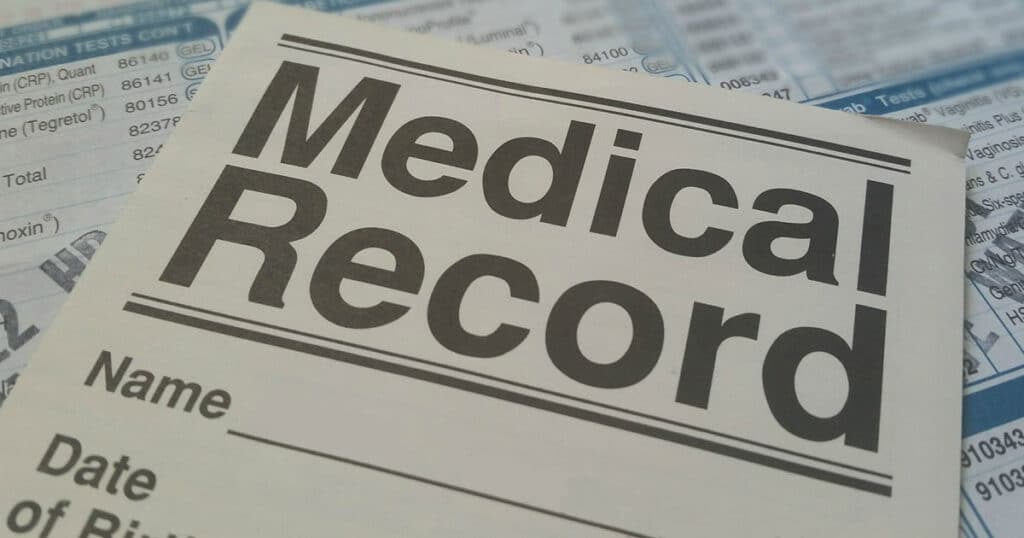What Is a Severe Impairment?
Home » Applying for SSDI » What Is a Severe Impairment?
Step two of the Social Security’s 5-step sequential evaluation process, is that a claimant must demonstrate that he or she has at least one “severe” impairment.
Severe vs. Non-Severe Impairments
For an impairment to be “severe” it must limit an individual’s physical or mental ability to perform basic work activities on a sustained basis. A “severe” impairment is more than a slight impact – an impairment is considered ‘non-severe’ if it is a slight abnormality that only minimally affects the ability to do basic work activities.
While many claimants suffer from multiple severe impairments, it is important to note that you only need one severe impairment to satisfy step two of the sequential evaluation process.
What Does “Severe Impairment” Really Mean?
The heart of the matter is whether or not the applicant can “sustain” their work. An employer wants their workers to be able to work a full shift, five days a week, fifty weeks per year. An employer is not going to be interested in keeping on a worker who can only do their duty 3 days per week, or requires a long break after a normal work activity to catch their breath or manage their pain, or cannot focus enough to follow directions or remember what they’re working on. These are the types of conditions – severe impairments – that SSDI is meant to help cover.
It’s important to remember not to think of this as trying to prove “I can’t work at all,” because that is not the standard you have to meet.
Rather, think of this as whether or not, “all of my injuries and illnesses combined prevent me from being able to keep going back to work day in, day out, working full shifts, up to the performance standards expected by my employer.” That is the essence of “sustaining” work.
Example:
Imagine you had a foot problem that limits you to standing for only four hours per day. That’s a severe impairment, but by itself likely isn’t enough to be considered disabled.
Now, imagine that instead of the foot problem, you had a shoulder problem that limits your ability to reach up, or lift heavy objects. That’s also a severe impairment, but by itself likely isn’t enough to be considered disabled.
Neither of those impairments alone would “meet or equal” or a listing. But, if you had both the foot problem and the shoulder problem, then those together might be enough to be considered disabled, if they prevented you from being able to sustain work.
Existence of a Severe Impairment Isn’t Enough All By Itself
Also, keep in mind that simply because you are found to have severe impairments does not mean you will be found disabled. The vast majority of those applying for disability will be found to have at least one severe impairment. In order to be found disabled, however, the claimant’s impairments must be of such severity that it precludes his or her engaging in any substantial gainful work. (POMS DI 22001.015).
Further, the impairment(s) must be expected to last for at least 12 months, or be expected to result in the applicant’s death. Injuries or illnesses that can be resolved in less than 12 months will not be deemed as preventing substantial gainful work.
Medical Evidence Is Essential
How do you prove a severe impairment? A severe impairment can be demonstrated in many different ways, including medical records, treating source statements from your doctors, statements from third parties, academic and special education records, and medical examinations scheduled by the Social Security Administration.
Be Sure To List (Or Tell Your Advocate) Everything
When the SSA determines your Residual Functional Capacity later in the process, they will consider all of your impairments and the cumulative effect they have on your ability to sustain a job. It is essential for you to tell the SSA (or your Advocate) up front all of the conditions and impairments that are limiting you, even if you’re not sure if they apply to your case.
Severe Impairments: Examples
Example 1: Applicant “Sally” is a bartender who has a very bad back and neuropathy from diabetes. Sally is normally required to work 8 hour shifts, and during her shift she’s expected to stay on her feet while serving customers; further, multiple times per shift she must lift and move heavy objects (cases of beer and spirits) as well as empty trash receptacles and occasionally bus tables.
Her back pain and nerve pain from the neuropathy have gotten so bad that she needs a 15 or 20 minute sit-down rest to recover every time she moves a few cases of beer from the walk-in refrigerator to the beer coolers behind the bar. Also, she has had to stop busing tables. She finds that she can’t work both Friday and Saturday nights now, even though her boss wants her to – those busy nights are so taxing on her, that she needs to only work one or the other and then rest the whole next day. Sally has had to call in sick several times because of back pain, even though she’s now out of sick time. Last week, her boss sadly told her he couldn’t keep her on anymore.
Sally has a decent chance of being considered disabled. Her conditions are likely a “severe impairment” to her ability to sustain work, and they are probably not going to get better enough within twelve months to allow Sally to return to work.
Example 2: “Louis” is a security guard at an industrial business who has a heart condition and suffers from depression. Louis spends part of his shift walking around the buildings the business owns, making sure that secure access doors are locked, machine enclosures are secured, and that fire alarms and smoke detectors are functioning properly. He spends the other part of his shift at a desk in the lobby, interacting with employees and visitors to make sure only those people with the appropriate privileges can come in, and writing reports.
Recently, Louis has noticed that he can’t walk as far, or as fast, as he used to be able to without stopping for a rest to catch his breath. Several times this month, his supervisor has had to ask another guard to finish Louis’s walking tour. Also, even though he is regularly taking his medications, Louis has been having a lot of difficulty staying alert, focused, and even awake, when he’s at the desk part of his job – co-workers have noticed him dozing off, seeming confused, not remembering things, and having to re-do paperwork. Louis’s supervisor has been understanding, but both Louis and his supervisor know he really cannot sustain his job under these circumstances.
Louis would have a good chance of being considered disabled, because his conditions are “severe impairments” to his ability to work, and they are almost definitely not going away in time for Louis to come back to work within twelve months.
Example 3: Applicant “Kevin” is a repair technician for an HVAC business. Last month, he hurt his leg really badly in a motorcycle accident. His doctors have fixed him up, but have told him he’s going to need to spend quite a bit of time off of his feet – 3 or 4 months at least – and that he’ll need to be on crutches and do several months of physical therapy after that. There is no way he’ll be able to drive the van he’s assigned, nor go on any repair calls for about 8 months. His boss has said there are no openings in the main office that Kevin can take while he recovers.
Kevin would not have a good chance of his conditions being considered a “severe impairment” – because they must be expected to last at least 12 months, or be a condition that would be expected to result in his death. His leg will heal and he will likely be back to work in less than a year. Kevin will have to look into other options.

Linda Cosme formerly served as a Member of the Appeals Council (AC) for the Social Security Administration (SSA), and Program Expert for the Social Security Administration and Disability Quality Branch (DQB). Ms. Cosme also served as a Quality Assurance (QA) Reviewer, Initial Disability Examiner, Reconsideration Disability Examiner, and Continuing Disability Examiner (CDR) for the Disability Determination Services (DDS). She is admitted to practice law in Arizona, Georgia, and the United States Ninth Circuit Court of Appeals.
It is easy to get started.
It is easy to get started. No upfront costs – You only pay if we win!
Oops! We could not locate your form.









